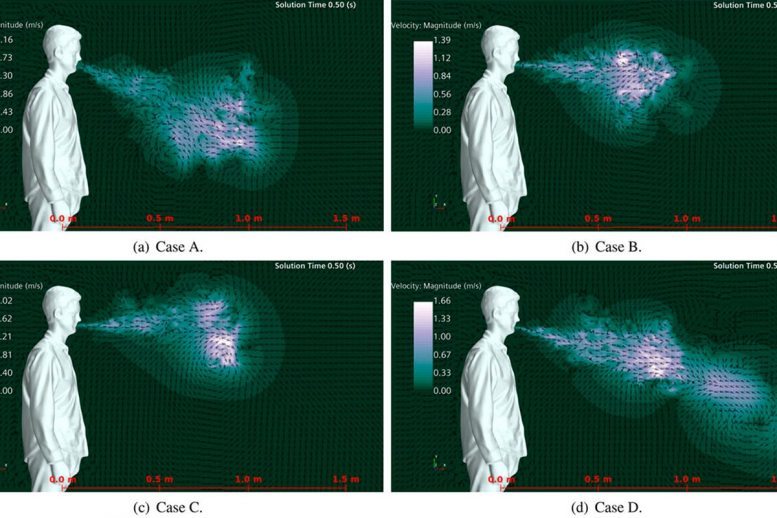
Sneeze velocity for four different nose and mouth types is shown. A) is open nasal passage with teeth, B) is open nasal passage without teeth, C) is blocked nasal passage without teeth, and D) is blocked nasal passage with teeth. Credit: University of Central Florida
Sneezes from people who have congested noses and a full set of teeth travel about 60% farther than from people who don’t, according to a new study.
New research from the University of Central Florida has identified physiological features that could make people super-spreaders of viruses such as COVID-19.
In a study appearing this month in the journal Physics of Fluids, researchers in UCF’s Department of Mechanical and Aerospace Engineering used computer-generated models to numerically simulate sneezes in different types of people and determine associations between people’s physiological features and how far their sneeze droplets travel and linger in the air.
They found that people’s features, like a stopped-up nose or a full set of teeth, could increase their potential to spread viruses by affecting how far droplets travel when they sneeze.
According to the U.S. Centers for Disease Control and Prevention, the main way people are infected by the virus that causes COVID-19 is through exposure to respiratory droplets, such as from sneezes and coughs that are carrying infectious viruses.
Knowing more about factors affecting how far these droplets travel can inform efforts to control their spread, says Michael Kinzel, an assistant professor with UCF’s Department of Mechanical Engineering and study co-author.
“This is the first study that aims to understand the underlying ‘why’ of how far sneezes travel,” Kinzel says. “We show that the human body has influencers, such as a complex duct system associated with the nasal flow that actually disrupts the jet from your mouth and prevents it from dispersing droplets far distances.”
For instance, when people have a clear nose, such as from blowing it into a tissue, the speed and distance sneeze droplets travel decrease, according to the study.
This is because a clear nose provides a path in addition to the mouth for the sneeze to exit. But when people’s noses are congested, the area that the sneeze can exit is restricted, thus causing sneeze droplets expelled from the mouth to increase in velocity.
Similarly, teeth also restrict the sneeze’s exit area and cause droplets to increase in velocity.
“Teeth create a narrowing effect in the jet that makes it stronger and more turbulent,” Kinzel says. “They actually appear to drive transmission. So, if you see someone without teeth, you can actually expect a weaker jet from the sneeze from them.”
To perform the study, the researchers used 3D modeling and numerical simulations to recreate four mouth and nose types: a person with teeth and a clear nose; a person with no teeth and a clear nose; a person with no teeth and a congested nose; and a person with teeth and a congested nose.
When they simulated sneezes in the different models, they found that the spray distance of droplets expelled when a person has a congested nose and a full set of teeth is about 60 percent greater than when they do not.
The results indicate that when someone keeps their nose clear, such as by blowing it into a tissue, they could be reducing the distance their germs travel.
The researchers also simulated three types of saliva: thin, medium, and thick.
They found that thinner saliva resulted in sneezes comprised of smaller droplets, which created a spray and stayed in the air longer than medium and thick saliva.
For instance, three seconds after a sneeze, when thick saliva was reaching the ground and thus diminishing its threat, the thinner saliva was still floating in the air as a potential disease transmitter.
The work ties back to the researchers’ project to create a COVID-19 cough drop that would give people thicker saliva to reduce the distance droplets from a sneeze or cough would travel, and thus decrease disease-transmission likelihood.
The findings yield novel insight into variability of exposure distance and indicate how physiological factors affect transmissibility rates, says Kareem Ahmed, an associate professor in UCF’s Department of Mechanical and Aerospace Engineering and study co-author.
“The results show exposure levels are highly dependent on the fluid dynamics that can vary depending on several human features,” Ahmed says. “Such features may be underlying factors driving superspreading events in the COVID-19 pandemic.”
The researchers say they hope to move the work toward clinical studies next to compare their simulation findings with those from real people from varied backgrounds.
Study co-authors were Douglas Fontes, a postdoctoral researcher with the Florida Space Institute and the study’s lead author, and Jonathan Reyes, a postdoctoral researcher in UCF’s Department of Mechanical and Aerospace Engineering.
Fontes says to advance the findings of the study, the research team wants to investigate the interactions between gas flow, mucus film and tissue structures within the upper respiratory tract during respiratory events.
“Numerical models and experimental techniques should work side by side to provide accurate predictions of the primary breakup inside the upper respiratory tract during those events,” he says.
“This research potentially will provide information for more accurate safety measures and solutions to reduce pathogen transmission, giving better conditions to deal with the usual diseases or with pandemics in the future,” he says.
Reference: “A study of fluid dynamics and human physiology factors driving droplet dispersion from a human sneeze” by D. Fontes, J. Reyes, K. Ahmed and M. Kinzel, 12 November 2020, Physics of Fluids.
DOI: 10.1063/5.0032006
The work was funded by the National Science Foundation.
Kinzel received his doctorate in aerospace engineering from Pennsylvania State University and joined UCF in 2018. In addition to being a member of UCF’s Department of Mechanical and Aerospace Engineering, a part of UCF’s College of Engineering and Computer Science, he also works with UCF’s Center for Advanced Turbomachinery and Energy Research.
Ahmed is an associate professor in UCF’s Department of Mechanical and Aerospace Engineering, a faculty member of the Center for Advanced Turbomachinery and Energy Research, and the Florida Center for Advanced Aero-Propulsion. He served more than three years as a senior aero/thermo engineer at Pratt & Whitney military engines working on advanced engine programs and technologies. He also served as a faculty member at Old Dominion University and Florida State University. At UCF, he is leading research in propulsion and energy with applications for power generation and gas-turbine engines, propulsion-jet engines, hypersonics and fire safety, as well as research related to supernova science and COVID-19 transmission control. He earned his doctoral degree in mechanical engineering from the State University of New York at Buffalo. He is an American Institute of Aeronautics and Astronautics associate fellow and a U.S. Air Force Research Laboratory and Office of Naval Research faculty fellow.

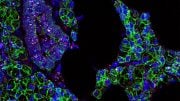

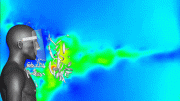
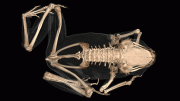
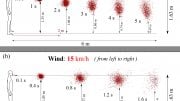
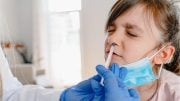
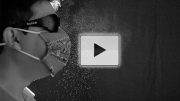
How do I stop the notices.
Look at your breath on a cold day. Now, think of being in a large crowd with a lot of people not wearing a mask.
Same thing with farts, right?
Lesson: Cover your mouth and nose when you sneeze, whether or not you have teeth, whether or not you are congested, and whether or not there is a deadly pandemic.
It’s interesting to see the differences due to these features, but I think the public health value could be enhanced if each case was paired with the results with an elbow in the way, perhaps at different distances from the face and different levels to compare degrees of blockage. Maybe the most effective elbow-angle is different for people with and without teeth?
Have you done any tests on how far do droplets spread when someone sneezes, when a person is wearing a mask, and do different mask designs make a difference in how far droplets will spread? Also how far will droplets spread with a mask and no teeth verses having teeth? Just curious, besides this is also a good idea for another test you might try.
Infection rates and the number of symptomatic cases do not depend on how infectious is the vector. Very simple: geometric growth. If the germs double every hour or so, say, then getting infected by someone that passes along two units or two counts of germs is equivalent to having met an hour before someone that passes along only one. If there is a superspreader that passes along 16 counts because it’s only 4 hours difference.
These aren’t even more likely to pass the germ to more people because they don’t spread a homogeneous and even count to everyone around them and their presence and closeness would be equivalent then to that of a regular infected person that spreads feeble amounts of germ counts around.
It’s only the host conditions that matter in the end, but would imply recognizing that lifestyle is key and that’s not what the medical establishment wants. Also most sheeple prefer to blame an outside force instead of reckoning about their junk food habit, their inhaling of fumes from “cleaning products”, their abuse of drugs and meds, and so on. Plus, it gives the covidiots a pretext to vent their anger against a random target.
Those covid “researchers” are propaganda agents donning white robes. ¿Who pays them?
Interesting. This looks super cool. I haven’t read it all yet, but I’ll be back to read the rest of it.
Are people really still sneezing on one another?
i belive sneeze is a confirmed negative for covid-19 no?
coughing is how you transmit it. Covid-19 patients don’t sneeze